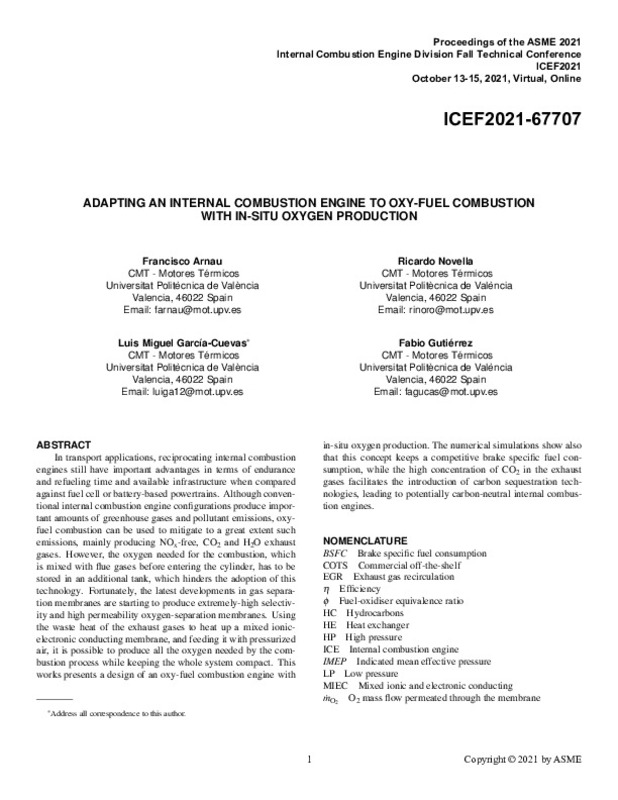JavaScript is disabled for your browser. Some features of this site may not work without it.
Buscar en RiuNet
Listar
Mi cuenta
Estadísticas
Ayuda RiuNet
Admin. UPV
Adapting an internal combustion engine to oxy-fuel combustion with in-situ oxygen production
Mostrar el registro completo del ítem
Arnau Martínez, FJ.; Novella Rosa, R.; García-Cuevas González, LM.; Gutierrez-Castro, FA. (2021). Adapting an internal combustion engine to oxy-fuel combustion with in-situ oxygen production. American Society of Mechanical Engineers (ASME). 1-12. https://doi.org/10.1115/ICEF2021-67707
Por favor, use este identificador para citar o enlazar este ítem: http://hdl.handle.net/10251/183740
Ficheros en el ítem
Metadatos del ítem
| Título: | Adapting an internal combustion engine to oxy-fuel combustion with in-situ oxygen production | |
| Autor: | ||
| Entidad UPV: |
|
|
| Fecha difusión: |
|
|
| Resumen: |
[EN] In transport applications, reciprocating internal combustion engines still have important advantages in terms of endurance and refueling time and available infrastructure when compared against fuel cell or battery-based ...[+]
|
|
| Derechos de uso: | Reserva de todos los derechos | |
| ISBN: |
|
|
| Fuente: |
|
|
| DOI: |
|
|
| Editorial: |
|
|
| Versión del editor: | https://doi.org/10.1115/ICEF2021-67707 | |
| Título del congreso: |
|
|
| Lugar del congreso: |
|
|
| Fecha congreso: |
|
|
| Código del Proyecto: |
|
|
| Agradecimientos: |
The authors want to acknowledge the institution "Conselleria d'Educacio, Investigació, Cultura i Esport de la Generalitat Valenciana" and its grant program "Subvenciones para la contratacion de personal investigador de ...[+]
|
|
| Tipo: |
|









